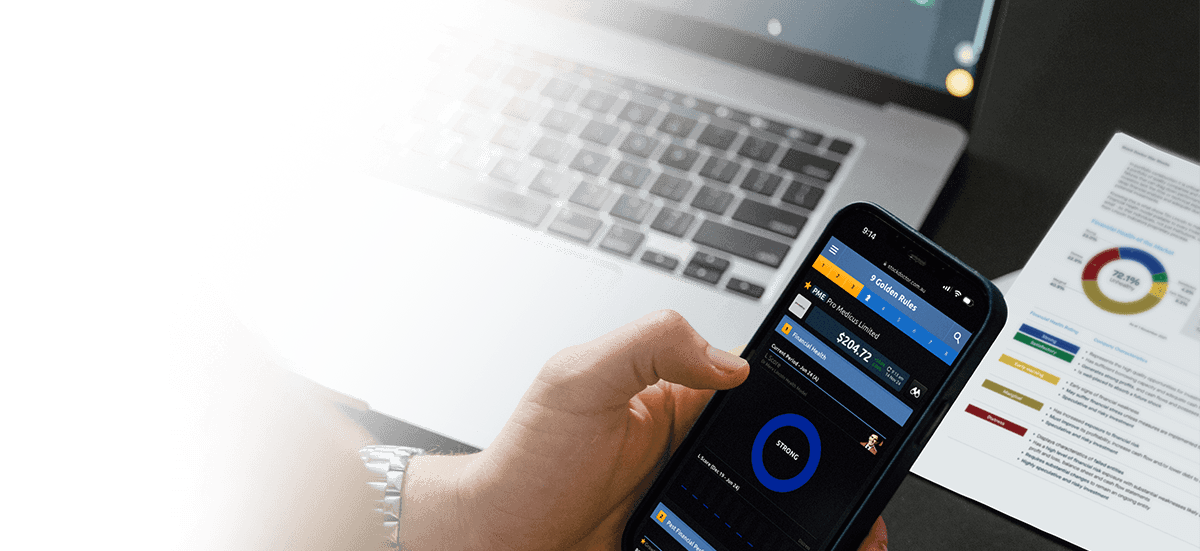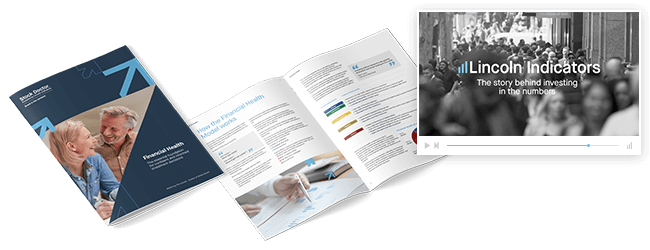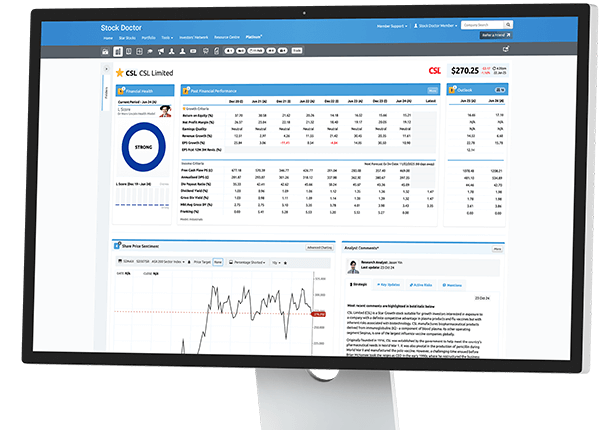Protect your investment portfolio
Trust our Financial Health ratings for smarter investments decisions
Uncover early warning signs of financial distress before it impacts your investments.
Our proprietary ratings analyse companies’ financial health so you can invest with confidence.

Minimise Risk
The PhD-backed Financial Health Model
Tough market conditions and high volatility bring additional risk to your portfolio. Discover a new way to invest safely and methodically.
We use a company’s financial reports to analyse the numbers of their business and their financial health – this takes place every 3 months for U.S. stocks and every 6 months for Australian stocks. It allows us to rule out around three-quarters of the market, so we can focus on the financially healthy stocks. It is here we find the best of the blue chips as well as the small-to-mid caps that others miss.
Feel confident and in control despite a bad investment experience and avoid corporate failures with next-level due diligence – powered by our algorithm.
The Power of Financial Health
Investing is a journey of triumphs and setbacks. Over time, the mark of a successful investor is the ability to learn from those setbacks. This is where Stock Doctor shines. At its heart is our acclaimed Financial Health Model. This model has been instrumental in guiding many numerous investors away from corporate pitfalls, including the high-profile collapse of Dick Smith, OneTel or Virgin Airlines.
Anchoring our stock selection around Financial Health and steering clear of high-risk speculative ventures has enabled our Star Stocks to outperform the market in the long run.
It's not whether you're right or wrong thats important, but how much money you make when you're right and how much you lose when you're wrong
Read the whitepaper
Download our white papers to gain expert insight into Lincoln Indicators' investment strategy - underpinned by our proprietary Financial Health Model - and learn how every investor can apply our approach to meet their investment goals.
Read the whitepaper Watch the video
Financial Health
Corporate failures we avoided
Since we first opened our doors, there have been hundreds of corporate failures our members have managed to avoid thanks to our proprietary methodology.
Marginal
Failed

Virgin Australia Holding (VAH)
Virgin Australia commenced operations in August 2000 as Virgin Blue with two aircrafts on single route before finding itself as a major airline following the collapse of Ansett Australia in September 2001.
In 2011, the company underwent a massive transformation, introducing new aircraft, uniforms, and even a business class. However, significant debt arose from this transformation and coupled with highly unstable profits, led to its marginal Financial Health rating as far back as February 2013.
The emergence of a global coronavirus pandemic and restrictions on travel meant that its operating cashflows dried up, forcing the company to go into voluntary administration in April 2020.
Early Warning
Failed

Babcock & Brown Limited (BNB)
Babcock & Brown was a global investment firm that at its peak had 28 offices around the world, over 1,500 employees and a market capitalisation of over $9.1 billion in 2007.
The stock exchange was impressed by those 2007 numbers, but we weren’t. Our methodology looked behind those numbers to the numbers in the financial statements and knew something was wrong, especially because their operating cash flow was significantly weakening all their cash flow ratios.
One year later their share price collapsed and a year after that they were in administration.
Early Warning
Failed

Dick Smith Holdings Limited (DSH)
Dick Smith was a well-known, highly successful retailer identified by our Financial Health Model as struggling.
This was a case of poor earnings’ quality, with the numbers manipulated to show strong earnings growth. In 2016, DSH was placed in voluntary administration – a sad outcome, especially for investors who lost everything, but another failure our members and investors easily avoided.
Distress
Failed

One.Tel Limited (ONE)
Once Australia’s fourth-largest telecommunications company and backed by some of Australia’s best-known families, including Packer and Murdoch, One-Tel began operations in May 1995 and was floated on the ASX at $2 per share in November 1997.
In the following two years, its customer base more than tripled to 2.2m in seven countries. But in early 2000 we identified its dire financial position, prior to the company spending $523m in Australian spectrum licenses, requiring $620m in funding. In the same year the company paid a $6.9m bonus to its directors despite reporting a loss of $251m.
One-Tel eventually collapsed on strategic mistakes and wrong pricing policies.
Dr Merv Lincoln
Merv Lincoln
The pioneer behind the
Financial Health methodology
Merv created his PhD over 30 years ago which rates companies' financials from Strong when it represents high-quality opportunities for investment to Distress when it is at risk of insolvency.
